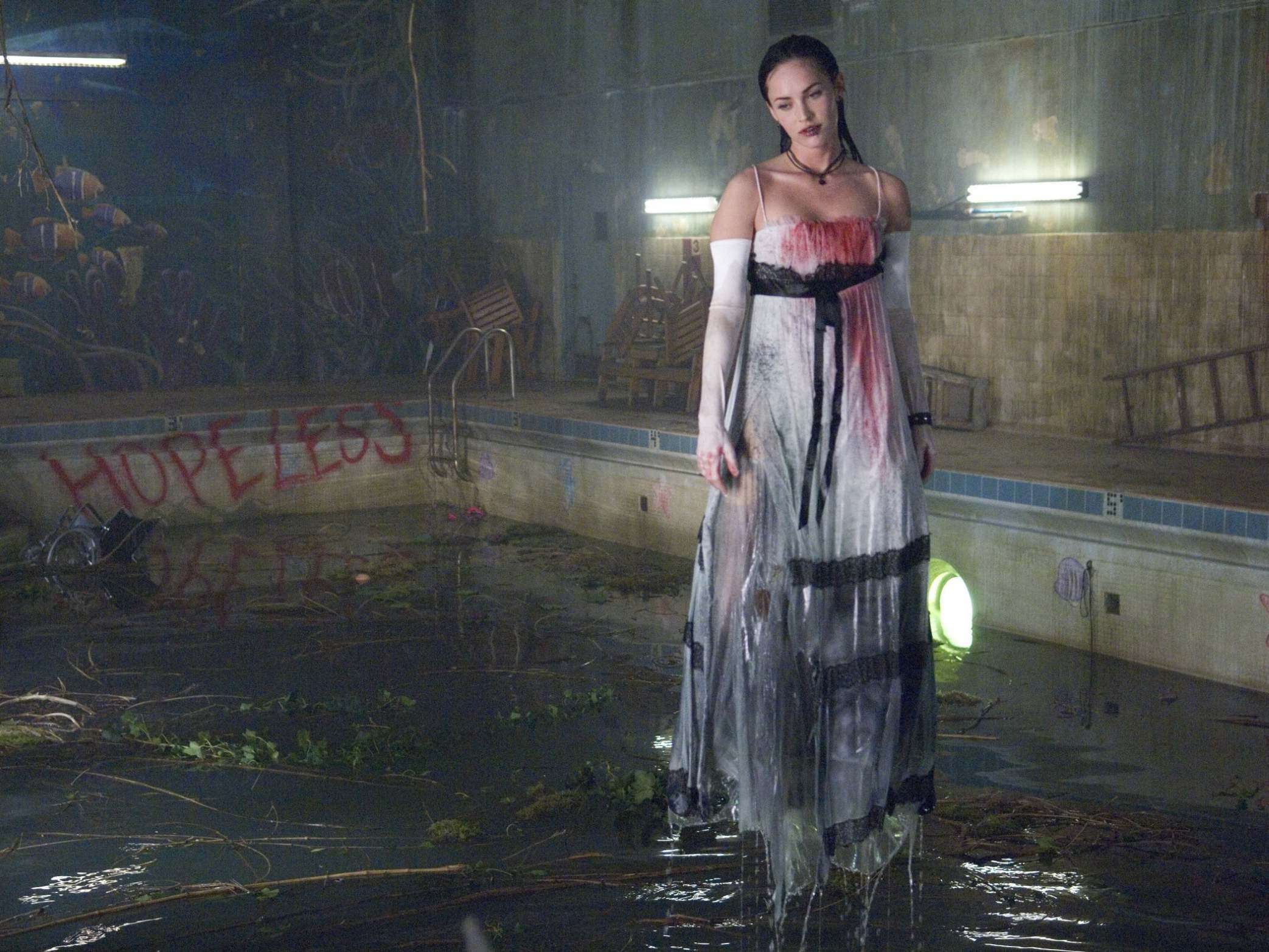The Indy Film Club: Why it took a decade for Jennifer’s Body to find its audience
It breached topics of sexual assault and exploitation with a dark sense of humour and a reverence for the horror genre. Clarisse Loughrey explores why it took so long for us all to catch up


With Jennifer’s Body, writer-director team Diablo Cody and Karyn Kusama spoke to teenage girls in their own language. Its tongue is sharp, its heart is fit to burst, and it weeps blood and terror – the two constants of womanhood. Two friends, cheerleader Jennifer Check (Megan Fox) and Anita “Needy” Lesnicki (Amanda Seyfried), are turned against each other when the former becomes a man-devouring succubus. The film speaks honestly about sexuality, exploitation, and co-dependency, but still dwells unashamedly in the realm of horror-comedy, delivering Heathers-worthy lines like: “PMS isn’t real; it was invented by the boy-run media to make us look crazy.”
You’d never guess any of this from the 2009 film’s marketing strategy. In one of the posters, a mini-skirted Fox is perched on the edge of a school desk next to the slobbering declaration of “HELL YES!” She looked part-temptress, part-teacher’s pet – all straight male fantasy. Another marketing angle, thankfully shot down, would have seen Fox host an amateur porn site. When Cody and Kusama questioned the studio’s approach, the email they received simply said: “Jennifer sexy, she steal your boyfriend.” The language, at least, suited their idea of a target audience – like the individual who came to a test screening and gave the feedback “needs moar bewbs [sic]”.
The story behind Jennifer’s Body reads like a case file on socialised misogyny. It started on a high: Cody was fresh off the minor-sensation that was Juno, which won her an Oscar in 2008. It was her first screenplay, after years working in tandem as a journalist and a stripper. Fox, thanks to 2007’s Transformers, had been propelled into near-instant stardom. Jennifer’s Body was her first leading role. Both faced an inevitable backlash. Cody’s rhythmic approach to teen slang (a la “honest to blog”) was quickly labelled as a cold, calculated front. People grew resentful at the idea of a smart, opinionated woman speaking openly about her sex worker past.
What Fox faced was even more venomous in nature. In an interview published in Wonderland magazine, she’d jokingly compared Transformers director Michael Bay to Hitler. As she’d later admit, the comparison was crass. But few were actually angry at the glib invocation of the Holocaust. No, the issue was that she’d had the temerity to insult the man who’d made her a star – even if the audition did consist of him filming her as she washed his Ferrari. A group of Transformers crew members published an open letter in which they called Fox “dumb-as-a-rock”, “the queen of talking trailer trash”, and an “unfriendly bitch” who should switch to porn. Fox was dropped from the Transformers franchise, though she’d ultimately work with Bay again on 2014’s Teenage Mutant Ninja Turtles. She watched other opportunities disappear before her eyes.
Whatever the initial hype around Jennifer’s Body, it had curdled into a mix of ill will and ulterior motives. The film earned a disappointing $16m at the US box office and was quickly overshadowed by the year’s other horror outings, Paranormal Activity and Zombieland. Critics weren’t particularly impressed at the time – it’s clear from the reviews that the marketing’s pure titillation had placed a burden of expectation on the film. Variety called it “less bawdy than advertised”, while Time denounced it as a “naked display of opportunism”. Famed US critic Roger Ebert dismissed it as “Twilight for boys, with Megan Fox in the Robert Pattinson role, except that I recall Pattinson was shirtless.” He was far from the only critic to comment, with boorish disappointment, on the film’s lack of nudity.
In 2018, the seismic shifts of the #MeToo movement allowed women – including critics and artists – to speak more freely about their experiences of sexual assault and exploitation. An unexpected result was a sudden mood shift when it came to Jennifer’s Body. A cluster of essays and articles reappraising the film started to pop up. This year, singer Halsey included samples from the film on her track “Killing Boys”. Time had brought into focus some of the film’s underappreciated aspects. Finally, it was being discussed as a feminist work.
Jennifer drags Needy, her put-upon BFF, to a music gig at a local bar, having become infatuated with the post-punk, pseudo-intellectualism of Low Shoulder’s frontman Nikolai (Adam Brody, who revels in playing a jerk). What she doesn’t predict is that the band are on the hunt for a virgin to sacrifice to Satan in the hope he’ll deliver them a sweet record deal. They mistakenly choose Jennifer who, in her own words, isn’t “even a backdoor virgin”. The ritual backfires and she’s left possessed by a demon with an insatiable appetite for human flesh.
It’s an unsettling sequence – not a sexual assault, but clearly coded as one. Fox is at her most raw and vulnerable here; the trauma carves tear-streaked lines into her face, as her attackers laugh in her face and mockingly perform Tommy Tutone’s “867-5309/Jenny”, happy to destroy her if it results in a little monetary gain. The actor’s been upfront about the parallels she saw in her own life, as someone who was “sacrificed for [other people’s] gain with almost no concern for my physical wellbeing”. But Jennifer’s Body isn’t a straightforward revenge film. She doesn’t chase down her attackers, but targets the more sensitive and sympathetic local boys. Jennifer’s a monster, but one of society’s own creation. Before her transformation, she’d already been trained to see her body as a weapon and a survival tool. She tells Needy her breasts are “like smart bombs: point them in the right direction and shit gets real”. Her demonic side just takes that idea to its most carnivorous extreme.
This also has an effect on Needy, since their relationship unmistakably crosses into the romantic – Cody allows this to be read both as a confirmation of their sexual orientation and as a commentary on the natural intensity of teen-girl friendships. Their kiss (which unsurprisingly became a central topic of pre-release conversation) is an emotional tempest. Genuine passion and tenderness sit side-by-side with a more subtle power play. Are Jennifer’s feelings genuine? Or does she feed off Needy’s affection, in the same way she might tuck into a little human thigh meat? There might have been a chance for love here, if their feelings towards each other and themselves hadn’t been corrupted from the offset. Jennifer’s Body was not only ready for these kinds of open, nuanced conversations back in 2009, but it was daring enough to breach those topics with a dark sense of humour and a reverence for horror conventions. It just took a whole decade for us all to catch up.
Join our commenting forum
Join thought-provoking conversations, follow other Independent readers and see their replies
Comments